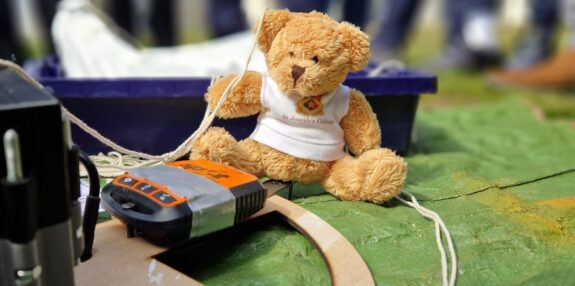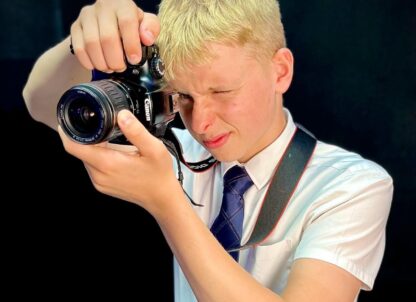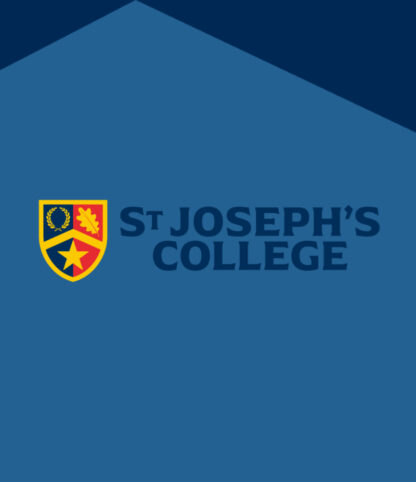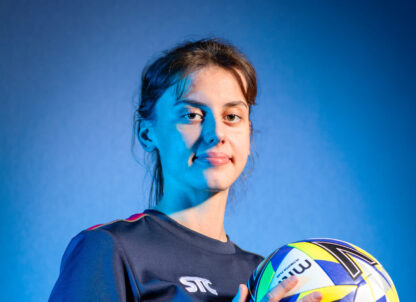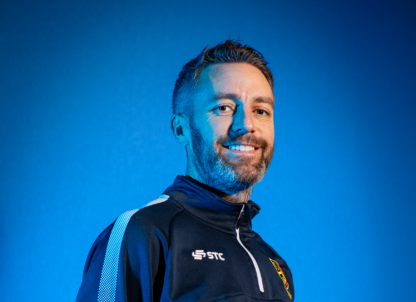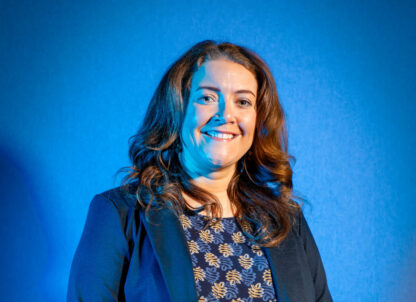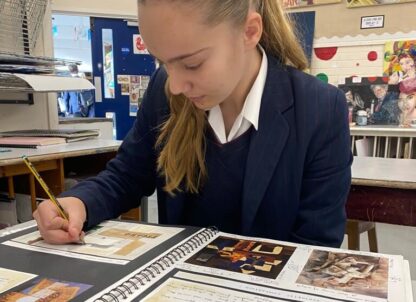To celebrate Science Week this year, we wanted to create an event that would bring the College community together and show that there was no limit to our ambitions – with so many of our past science students going on to great scientific careers, we wanted to show that the sky was the limit – literally!
So the idea of sending a teddy bear up to the highest levels of the atmosphere was born, along with vast amounts of research and planning. Mr Fisher, our Senior Lab Technician led the research efforts. We knew we would need a large weather balloon, filled with helium and in due course, a 1kg latex balloon and parachute arrived in the College. We then started thinking about the electronics that would be needed to record the flight and the accompanying telemetry data. We were fortunate to have in the College a year 11 student, Harry, who is a hugely talented coder, and, having bought the essential elements for the Raspberry Pi computer and associated sensors, Harry soldered them together, wrote the code to operate them and tested them thoroughly at ground level.
The engineering maestro that is Mr Kempin then laser-cut the platform that Teddy and the computer would sit on, and 3D-printed the computer housing. We were ready to go, and just needed the weather to play ball…
We looked at specialist forecasting sites, that told us not only what the weather was doing down here at ground level, but more importantly, what the winds were doing in the stratosphere. Our initial planned launch at the end of Science Week had to be cancelled as the winds were blowing completely the wrong way. We were patient and saw a window of opportunity at the very end of the term. The forecasts predicted Teddy landing in northern France or Belgium, and we made final preparations to launch. This included getting permission from the Civil Aviation Authority and notifying air traffic control of our activities. Once the paperwork was complete, we were ready to go.
The day of the launch was breezy, and it was a challenge to precisely measure the weight of the balloon in these conditions. (The more Helium we put into the balloon, the lighter it became, and this was the mechanism we needed to use to ensure the correct volume of gas was used to inflate the balloon.) This proved to be a critical factor in what happened next!
After one or two false starts, Teddy Armstrong was launched from the College at 2.30pm on Wednesday 5 April. Hundreds of students came out to count down the launch, and cheer him off on his journey, watching him ascend serenely into the skies above Ipswich. Exactly as planned, the balloon initially headed north, going over Portman Road and the town centre, before the winds higher in the atmosphere sent it initially east, and then south over the North Sea.
Minutes after the launch, I drove off on the chase, with Mrs Briffa and our son Louis (Year 1), keen to race the balloon to Europe and retrieve it wherever it landed. We were prepared with wellies, ladders, a pole and anything else that we thought might be helpful if it landed in an awkward spot!
Base Camp at St Jo’s were receiving data from the balloon and tracking its progress. The ascent rate seemed higher than we originally planned, but the direction of travel was exactly what we expected. As I was driving through Kent en route to the Channel Tunnel, we could see that we had overtaken the balloon and were expecting to be in Belgium before Teddy.
However, sad news awaited us when we came out of the tunnel in France. The higher-than-expected ascent rate of the balloon meant that it had reached its target altitude of 30,500m too early. At such a high altitude, and with such low atmospheric pressure, the balloon will have expanded to a diameter of over 7m, until it eventually burst. All our plans had involved this burst happening over land in Europe, but it happened about 30 miles off the coast of Kent. Teddy’s parachute deployed exactly as intended, but even so, it was not able to drift Teddy far enough to reach the shoreline, and the balloon seems to have landed in the sea.
Mindful that this was always going to be a risk with our coastal location, we had taken steps to ensure that as much as possible on the balloon and platform was biodegradable and natural and would not create microplastics or harm ocean life. Teddy was also clearly marked with the school’s name and contact details, so anyone who finds him in the future will be able to get him home again.
While we were not able to complete the adventure the way we wanted to, there are a great many positives from this experience. We successfully sent a St Jo’s teddy to an altitude of 30,500m, four times the height of Mount Everest and 2.5 times higher than an airliner. He was accompanied by a computer designed and built in-house by one of our students. And, as he sailed up into the sky above the College, students across the College community came together to wish him well, knowing that for them too, the sky is the limit.

